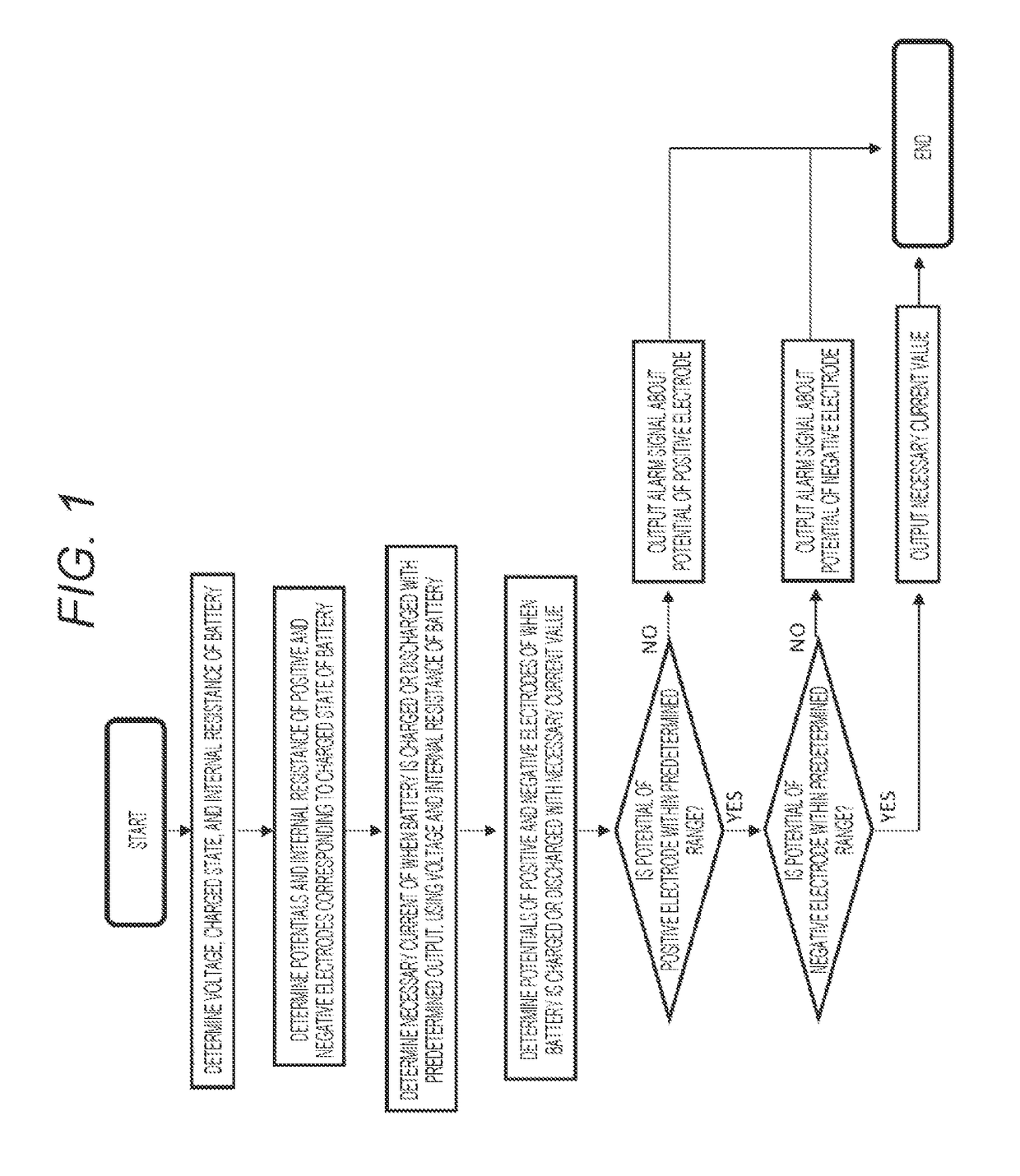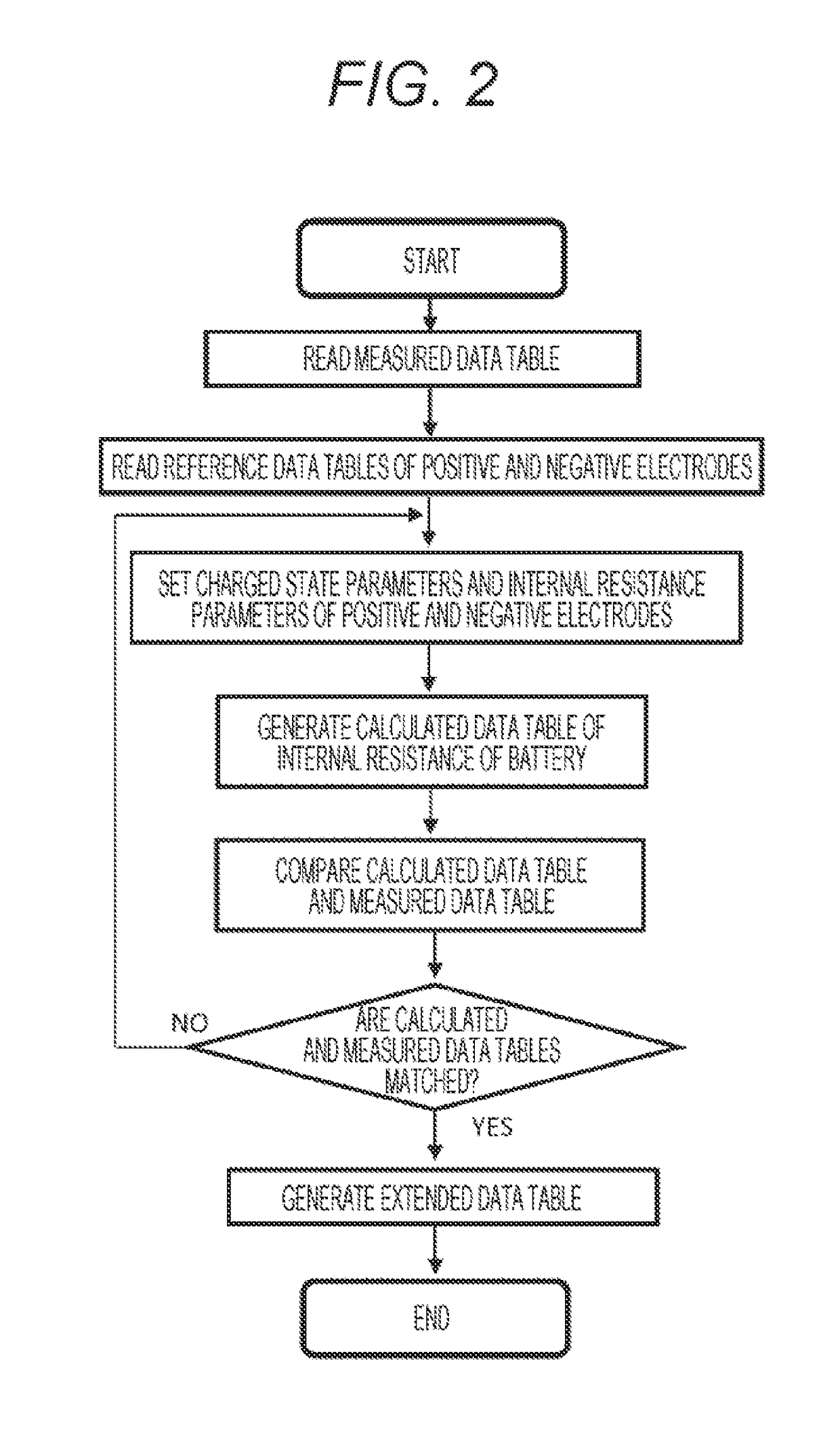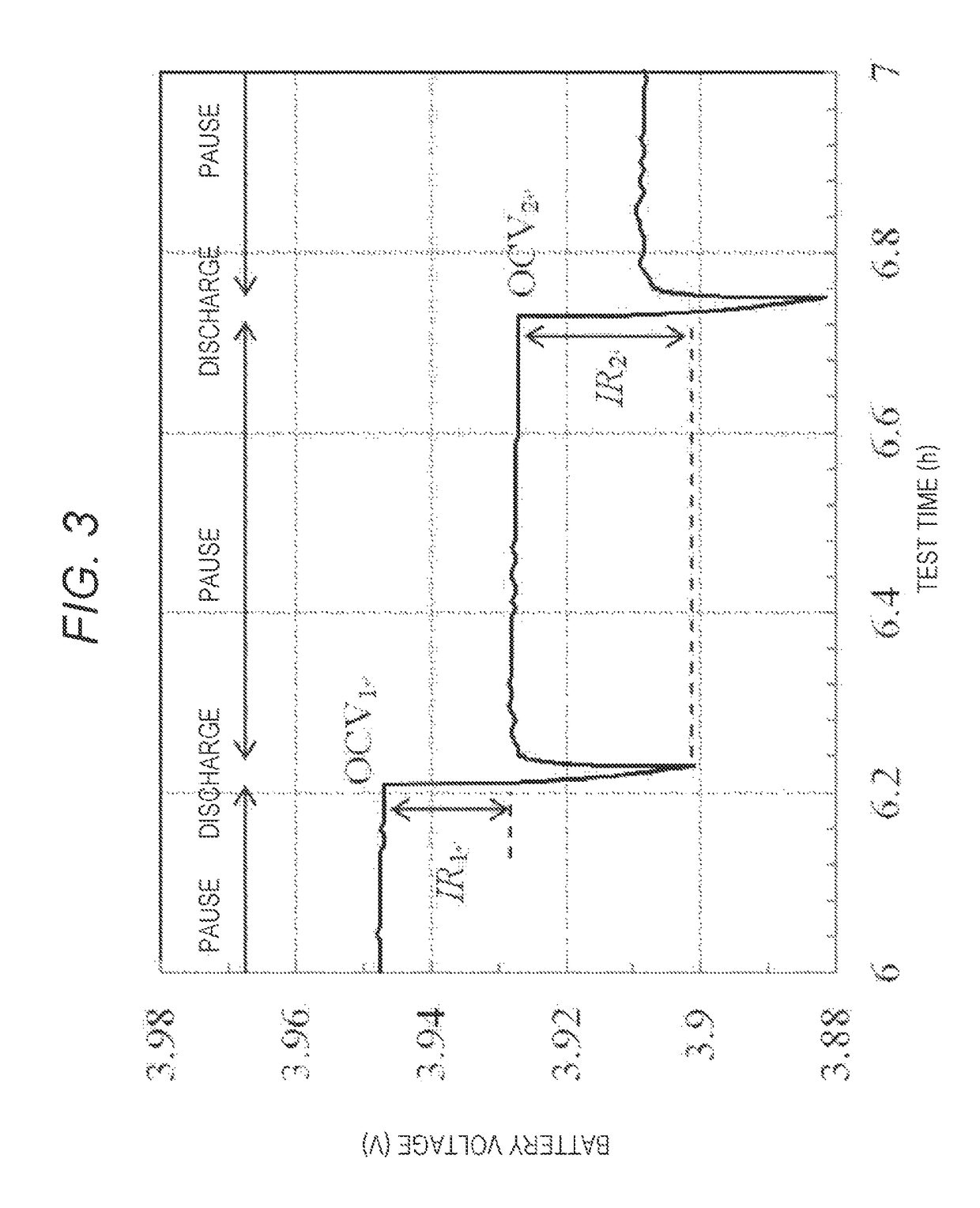Method of controlling secondary battery
a secondary battery and battery technology, applied in the direction of secondary battery servicing/maintenance, electrochemical generators, transportation and packaging, etc., can solve the problems of limited improvement, inability to determine the resistance of the positive electrode and the resistance of the negative electrode, etc., to suppress the characteristic deterioration and enhance the safety of the secondary battery
- Summary
- Abstract
- Description
- Claims
- Application Information
AI Technical Summary
Benefits of technology
Problems solved by technology
Method used
Image
Examples
first embodiment
[0020]Hereinafter, an operation in a method of controlling a secondary battery of the present invention will be specifically described with reference to FIG. 1. FIG. 1 is a flowchart of control of a secondary battery in an embodiment of the present invention.
[0021]In the present embodiment, for a SOC of the secondary battery, a data table in which a battery voltage, an open circuit potential of a positive electrode, an open circuit potential of a negative electrode, an internal resistance of the battery, an internal resistance of the positive electrode, and an internal resistance of the negative electrode are associated with each other is provided in a control device. As the SOC of the battery in this data table, for example, a method of dividing a discharge capacity from a fully charged state to a totally discharged state into 100 parts, and expressing the fully charged state as 100 and the totally discharged state as 0. Alternatively, there is a method of using a discharge amount ...
second embodiment
[0030]Another embodiment of control of a secondary battery according to the present invention will be described. In the present embodiment, a SOC of a secondary battery, and opening circuit potentials of positive and negative electrodes and internal resistances of the positive and negative electrodes are associated based on a measured data table made of the SOC of the secondary battery, a corresponding battery voltage, and a corresponding internal resistance of the battery. Then, a control device creates an extended data table configured from the SOC of the secondary battery, the corresponding battery voltage and the corresponding internal resistance of the battery, the open circuit potentials of the positive and negative electrodes, and the internal resistances of the positive and negative electrodes. Following that, control described in the first embodiment is performed using the extended data table.
[0031]FIG. 2 is a flowchart illustrating a procedure of generating the extended da...
PUM
| Property | Measurement | Unit |
|---|---|---|
| open circuit voltage | aaaaa | aaaaa |
| positive electrode potential | aaaaa | aaaaa |
| negative electrode potential | aaaaa | aaaaa |
Abstract
Description
Claims
Application Information
 Login to View More
Login to View More - R&D
- Intellectual Property
- Life Sciences
- Materials
- Tech Scout
- Unparalleled Data Quality
- Higher Quality Content
- 60% Fewer Hallucinations
Browse by: Latest US Patents, China's latest patents, Technical Efficacy Thesaurus, Application Domain, Technology Topic, Popular Technical Reports.
© 2025 PatSnap. All rights reserved.Legal|Privacy policy|Modern Slavery Act Transparency Statement|Sitemap|About US| Contact US: help@patsnap.com



